
views
- Sebaceous filaments cannot be permanently removed, but you can decrease their appearance.
- To minimize sebaceous filaments, exfoliate your face with a salicylic acid treatment twice a day, and incorporate a retinol serum into your nighttime routine.
- Reduce sebum production naturally by applying a kaolin clay mask once a week.
- Blackheads and sebaceous filaments are not the same. Sebaceous filaments move oil to the skin’s surface, while blackheads completely clog your pores.
What are sebaceous filaments?
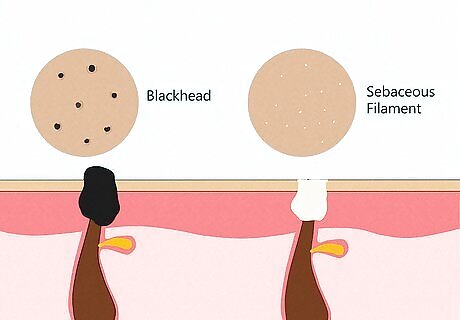
Sebaceous filaments are hairlike strands of oil and dead skin cells. They move oils from the sebaceous glands (sebum) to the skin’s surface, protecting your skin and keeping it hydrated. Although they’re off-white to yellow in color, many people mistake them for comedones like blackheads and whiteheads. Sebaceous filaments are typically found in the T-zone (nose, chin, and forehead), especially in people who have oily skin. If you have enlarged pores, your sebaceous filaments look more prominent. By establishing an effective skincare routine, you can minimize the appearance of your pores and sebaceous filaments, but you cannot permanently get rid of either.
Minimizing Sebaceous Filaments
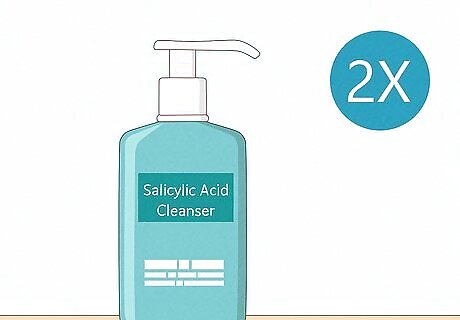
Exfoliate with salicylic acid twice a day. Gently exfoliate your pores with a salicylic acid cleanser or leave-on treatment. Salicylic acid is a lipophilic beta-hydroxy acid, so it dissolves oil and dead skin cells, reducing sebum production. You can add salicylic acid into your routine via a cleanser, cream, gel, or pad form, but be sure to perform a patch test before using any new skincare product. If you feel a painful burning or stinging sensation when exfoliating, stop using the product immediately—you should only feel gentle tingle at most. EXPERT TIP Bailey Cho Bailey Cho wikiHow Staff Writer Bailey Cho is an Editing Fellow at wikiHow, based in Dallas, TX. She has over 2 years of editorial experience, with work published in student journals and lifestyle publications. Bailey graduated from the University of Texas at Austin with a B.A. in Advertising and a Minor in Business. Bailey Cho Bailey Cho wikiHow Staff Writer "My favorite salicylic acid treatment is the Paula’s Choice Skin Perfecting 2% BHA Liquid Exfoliant. It gets rid of all the gunk in my pores without irritating my sensitive skin!"
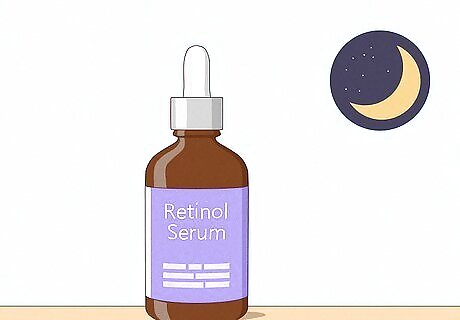
Incorporate a retinol serum into your nighttime routine. Retinoids are the most consistent ingredient to decrease oil production and minimize sebaceous filaments. They also increase cell turnover, preventing dead skin cells from becoming trapped in your pores. To incorporate retinol into your routine, start with a pea-sized amount every other day and then use it daily after 3-4 weeks. If you’ve never tried retinol before, you may experience dry, flaky skin at first. To avoid this, use the “retinoid sandwich” method: apply a layer of moisturizer before and after your retinol to protect your skin barrier. If you have sensitive skin, incorporate retinol into your routine slowly. During the first month, use it every third night, and if you don’t see any irritation, apply it every second night during the second month, and then every night the following month. Retinoids increase your skin’s sensitivity to the sun so only apply it at night, and be sure to wear SPF and sun protective clothing during the day. Ask a dermatologist for prescription-strength retinoids to help control large sebaceous filaments.
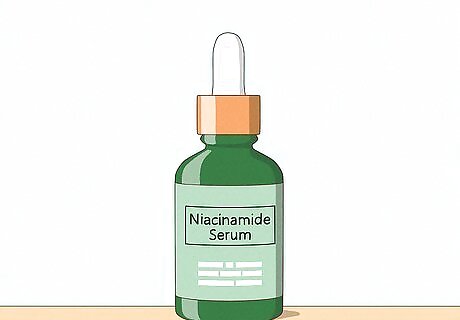
Apply a niacinamide serum to regulate oil production. Unlike retinol and salicylic acid, niacinamide complements a variety of skin types, including dry, sensitive, and rosacea-prone skin. It’s excellent at removing excess sebum and reducing the appearance of pores, while also supporting the skin barrier. Niacinamide is the active form of water-soluble vitamin B3, so you can easily find it in cleansers, eye creams, moisturizers, serums, and sunscreen. If you’ve never used niacinamide before, purchase a serum with 5% niacinamide (instead of 10%) to avoid irritation. Alternatively, use products with green tea, like a toner or essence, to reduce oil production and minimize sebaceous filaments.
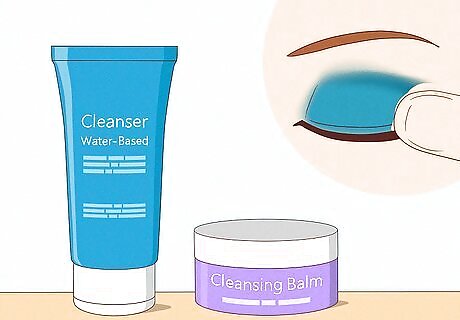
Double-cleanse if you wear makeup. To remove all traces of oil and grime, massage your face with a cleansing balm for 1-2 minutes, and then follow up with a normal water-based cleanser. When you double cleanse, you can physically feel the sebaceous filaments coming out of your nose, leaving your pores squeaky-clean. If you don’t wear makeup, there’s no need to double-cleanse—it can actually strip your skin. Always apply a hydrating moisturizer after cleansing your face to replenish and protect the skin barrier.
Natural Remedies to Reduce Sebum

Use a clay mask to absorb excess oils on the skin’s surface. Once a week, apply a kaolin clay mask to minimize the appearance of pores and sebaceous filaments. Kaolin is the most mild natural clay, so it’s ideal for all skin types. It gently exfoliates your pores, without stripping your skin and leaving it dry. To make a mask from powdered clay, combine 6 tablespoons (7.6 g) of kaolin clay with 1 tablespoon (14.8 mL) of water or hydrosol (floral water). Since powdered clay doesn’t have water or preservatives, you can store a clay mask for up to a year. Alternatively, use a bentonite clay mask if you have especially oily or acne-prone skin. Bentonite has antibacterial and anti-inflammatory properties that detoxify your pores, reducing sebum production.
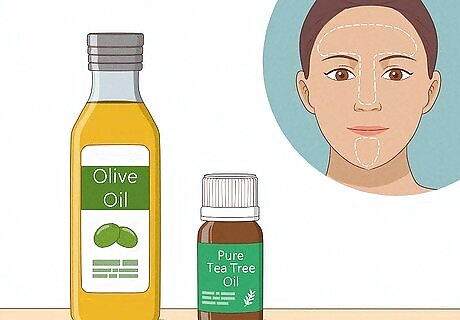
Balance your sebum levels with pure tea tree oil. Dilute tea tree oil with a carrier oil like olive or jojoba, and dab this mixture onto your T-zone (or anywhere you have sebaceous filaments). Tea tree oil effectively kills bacteria, which prevents sebaceous filaments from turning into blackheads. If you have sensitive skin, dilute your tea tree oil with pure aloe vera gel. Aloe vera is a soothing, hydrating ingredient that also removes excess sebum.
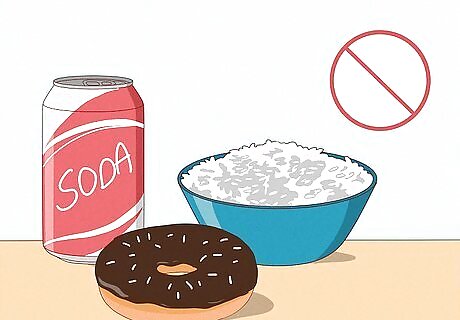
Reduce your carbohydrate intake to decrease oil production. Research shows that people with high-glycemic diets produce more sebum than average, so switch up your diet to improve your skin and overall health. Eliminate sugary, processed foods, and cut back on bread, rice, pasta, and cereal. For optimal skin, eat a balanced diet of fruits, vegetables, lean proteins, and whole grains, and drink 4-6 cups of water throughout the day to keep your skin hydrated. Studies have shown that omega-3 fatty acids reduce inflammation and sebum production, so consider adding more fish, nuts, and plant oils into your diet.
Example Skincare Routine
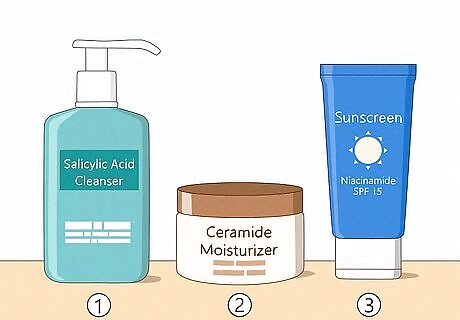
Morning: salicylic acid cleanser, moisturizer, sunscreen with niacinamide. To remove excess oil in your pores, wash your face with a salicylic acid cleanser. Pat your face dry with a clean towel, and apply a ceramide-packed moisturizer to fortify the skin barrier. Finish off by applying a sunscreen with niacinamide, and make sure it has an SPF of 30 or higher. Moisturizer prevents your skin from overproducing oil, which can reduce acne and sebaceous filaments. Be sure to apply a nickel-sized amount of sunscreen over your face, hands, and neck.
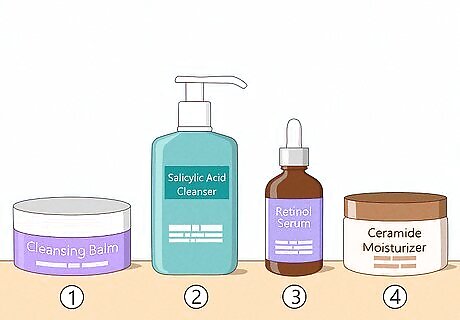
Night: cleansing balm, salicylic acid cleanser, retinol serum, moisturizer. Massage your face with a cleansing balm to remove any dirt, oil, and makeup, and then follow up with a salicylic acid cleanser to purify the skin. After patting your face dry, apply 2-3 drops of retinol serum to minimize the appearance of sebaceous filaments, and then finish off with a ceramide-packed moisturizer. If you usually wake up shiny, apply 2-3 drops of niacinamide serum after your retinol to regulate oil production over night.
Are sebaceous filaments and blackheads the same?

No. Unlike blackheads, sebaceous filaments are a natural part of the skin. Sebaceous filaments help oil flow toward the skin’s surface, while blackheads are plug-like bumps that clog your pores. If your skin produces too much oil and bacteria (and it combines within your pores), a sebaceous filament can turn into a blackhead. To avoid this, don't touch your face during the day, and always wash your face after sweating. Blackheads are bumpy and dark, while sebaceous filaments are smooth and lighter in color. The same treatments for sebaceous filaments also remove blackheads, but you can try getting a facial peel for more immediate results.
Should you squeeze sebaceous filaments?

No, squeezing sebaceous filaments can cause long-term pore damage. When you pop out a sebaceous filament, it naturally refills within 30 days. However, your nails disrupt your pore structure, increasing skin irritation and sensitivity. Rather than squeezing your pores or using a pore strip, exfoliate your pores to naturally reduce sebum production.
When to See a Dermatologist

If home treatments don't work after 3 months, get professional help. It takes time for your skin to adapt to a new skincare routine, so be sure to stay consistent even if you don’t see immediate results. If over-the-counter or natural treatments aren’t working, schedule an appointment with your dermatologist to get your skin examined clinically. Depending on your condition, a dermatologist may prescribe an oral medication to inhibit the sebaceous glands and reduce sebum production. To prepare for your visit, develop a list of questions to ask your dermatologist, such as why your sebaceous filaments are so prominent or why your at home treatment was ineffective.



















Comments
0 comment